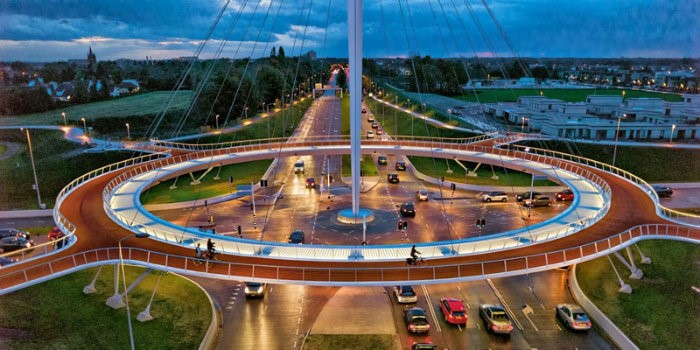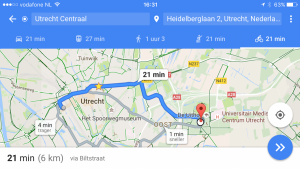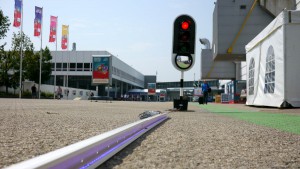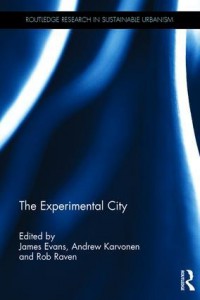
DCA Blog by Rob Raven (Copernicus Institute of Sustainable Development, Utrecht University)

Over the past years I have found myself increasingly using Google Maps to travel through unknown urban areas to guide me to my destination. Cycling is one of the mobility modes that Google Maps allows me to use – next to cars, public transport, Uber (or equivalents) and walking. This is very practical as I no longer have to plan ahead – I can simply type in my address of destination when arriving in a new city, and start traveling.
Including cycling in Google Maps is but one example of many smart innovations emerging to make cycling more relaxed, efficient, joyful and so on. Firms like Google, but also entrepreneurs, city planners and civil society groups have (re)discovered cycling as an interesting area for innovation and a means to improving urban life. Innovations are ranging from smartphone apps to nudge behaviour, smarter infrastructures such as green waves for cyclists, or new ways of bike sharing.

Cycling holds the promise of contributing to more sustainable cities in various ways, such as reducing urban carbon footprints, or improving inner-city air quality, or increasing health of urban populations, or contributing to more attractive public urban spaces in general. These are some of the topics also discussed at the 7th International sustainability transitions conference in Wuppertal from where I am writing this blog. Cycling, however, is not mentioned ones. Also Geels’ important book from 2012 on ‘Automobility in transition’ hardly explores the role of cycling as an alternative in post-car societies and cities.
That does not mean that cycling is not considered part of urban transitions towards sustainability. It could simply be that social science (as is often the case) is running behind the object it is observing – science needs time (and some distance) to make sense of new social developments (although admittedly Google Maps already introduced its cycling feature in 2010).
Nevertheless, this seems to be the right time to start exploring the roles, benefits, but also the potential new risks and limitations of cycling for transforming cities into more sustainable places given the substantial attention cycling is attracting. Not just in the Netherlands, but in many other places (and in particular urban areas) around the world. Engaging with these developments now offers scholars interested in urban transformations an opportunity to explore and analyse a transition-in-the-making, with potentially major implications for the ways in which future cities may become more sustainable.

But can we know if cycling is in fact contributing to sustainable transitions in urban areas as they unfold? A major topic that is discussed at this conference is the role of urban experimentation such as living labs in wider processes of transformations, and academic literature has started to explore its potential. A recent contributions is the book The Experimental City. In short, living labs are places (such as urban districts) where new social and technological innovations are trialled, with an explicit attempt to learn from those trials to collectively shape future developments. Ideally, living labs are places not just for optimisation and implementation, but also for pausing and reflecting. Is this the kind of change we desire? Under which conditions can cycling contribute positively?
A range of concepts, cases, methods and characteristics of living labs have crossed the debates in Wuppertal – ranging from Rob Hopkins from the Transition Town movement exploring bottom-up activists’ approaches, to analyses of more formalised initiatives such as the European Network of Living Labs, from which much can be learned – both practically and academically. What they share is a systemic understanding of change – transitions are socio-technical processes in which technological innovations evolve in interaction with cultural meanings, institutions, markets, policies and so on. Smart cycling innovation is not just a matter of the latest smartphone app or e-bike. Smart cycling innovation raises new questions around policy priorities, infrastructural design, business models, lifestyles and social justice.
This implies that living labs also need to be performed with such a systemic understanding. A key question then is how these livings labs can be useful in exploring and governing smart cycling innovation in such a way that these innovations becomes instrumental in shaping urban transitions in socially desirable directions.
This in short is precisely the ambition of a recently started Dutch research project on Smart Cycling Futures, in which a range of academics and urban actors closely collaborate to explore the potential of smart cycling innovations in shaping the future of urban regions in the Netherlands.
*The title is inspired by Mike Hodson and Simon Marvin’s 2010 paper ‘Can cities shape socio-technical transitions and how would we know if they were?, Research Policy, 39, 477-485

Leave a Reply
You must be logged in to post a comment.